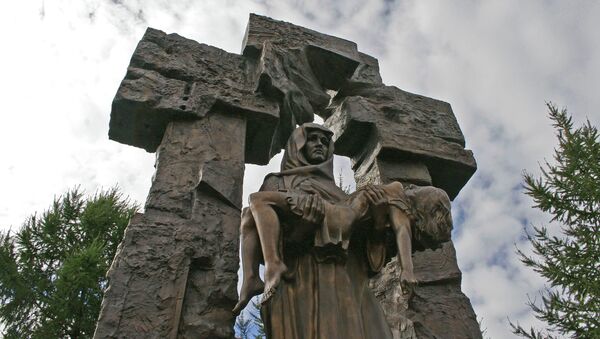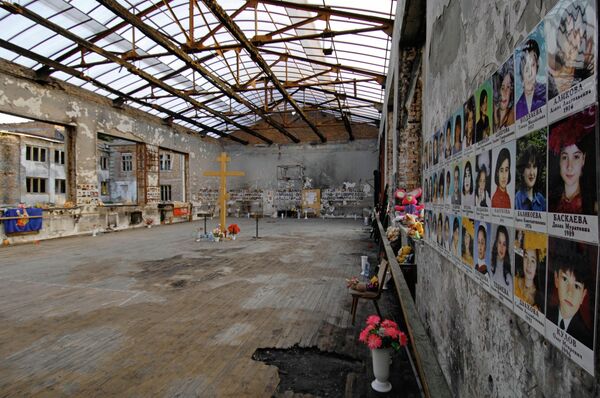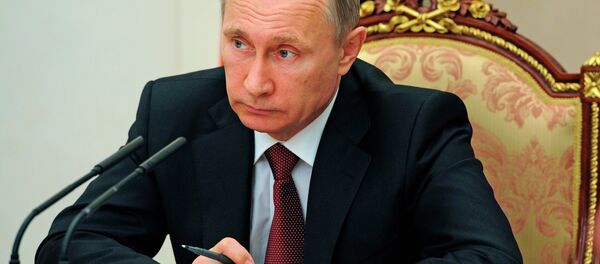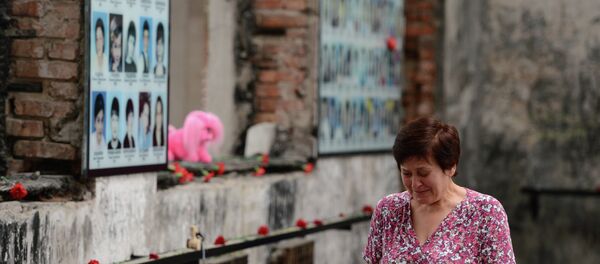MOSCOW (Sputnik) — Over 30 armed terrorists, including several women, led by Rasul Khachbarov (also known as Colonel) drove a canvas-covered truck into the courtyard of secondary school No.1 in the city of Beslan, in the Republic of North Ossetia-Alania during celebrations dedicated to the start of the school year on September 1, 2004.
Armed men jumped out of the vehicle and immediately started firing automatic weapons over the heads of people in the courtyard, forcing the crowd into the school building. Only a lucky few managed to take advantage of the ensuing confusing and escape.
According to preliminary estimates, 354 hostages were taken. It turned out later that there were many more – 1,116. The vast majority of them were children, including pre-schoolers.
On September 1-3, Russian presidential adviser Aslambek Aslakhanov, pediatrician Leonid Roshal, representatives of the authorities and public figures attempted to establish contact with the terrorists. Over three days, the terrorists did not put forward explicit demands and refused to accept medicine, water or food for the hostages, or money in exchange for the hostages.
The only person the extremists agreed to let into the school building the following day, September 2, was former Ingush President Ruslan Aushev. He managed to convince the militants to let 26 hostages – women and young children – go with him.
On the third day, the operational staff managed to agree on evacuating the bodies of the hostages killed during the first days of the attack.
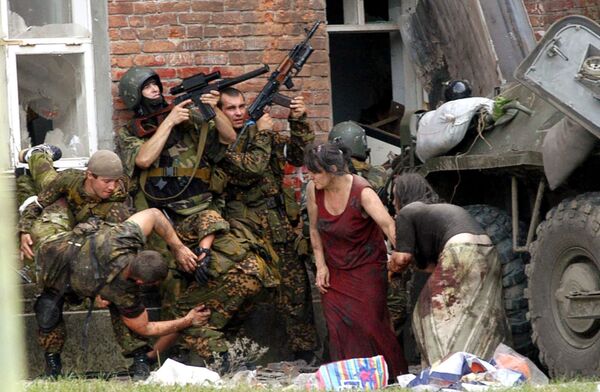
The end came on September 3 when a vehicle with four members of the Emergencies Ministry drove to the school at about noon to collect the bodies of the hostages killed by the terrorists. Two powerful explosions were heard inside the gym followed by shooting. Women and children – almost all of the men were killed by terrorists in the first two days – started jumping from windows and escaping through a hole in the sports hall’s wall.
According to investigators, the explosions were spontaneous and provoked an unplanned assault on the school building by special forces troops. The exchange of fire lasted until late in the evening and the building was partially destroyed.
Casualties included 335 people, of whom 318 were hostages, including 186 children.
A genetic exam was used to identify some of the hostages. The casualties included 10 FSB-led Alpha and Vympel unit troops, two Emergencies Ministry employees and one Beslan resident who took part in the rescue operation.
Most of the special forces troops that died did so while trying to protect children with their bodies.
In total, as many as 810 hostages and residents of Beslan, as well as troops from the FSB, the Emergencies Ministry staff, and police and military officers were wounded.
In addition to wounds and injuries received during the assault, the hostages suffered from a severe psychological trauma. Over the more than 50 hours that the hostages spent in the school, the terrorists did not allow them any water, food or medicine.
A total of 1,315 people were recognized as affected by the attack in Beslan.
Kulayev’s trial began in May 2005. He was charged with eight criminal offenses, including banditry, terrorism, murder, assault on a law enforcement officer, hostage-taking and illegally possessing, carrying and purchasing arms, ammunition and explosive substances.
A year later, on May 26, 2006, the Supreme Court of North Ossetia found Kulayev guilty on all counts and sentenced him to life imprisonment.
September 6 and 7, 2004, were designated as mourning days in Russia to mark the attack in North Ossetia.
On November 26, 2004, the North Ossetian president signed an executive order, On the Ethical and Moral Situation Surrounding the Beslan Tragedy, according to which September 3 was declared the Day of Remembrance of the Victims of the Terrorist Act in Beslan in the Republic of North Ossetia–Alania in 2004.
On September 3, 2005, the Tree of Sorrow monument was unveiled at the memorial cemetery in Beslan where most of the victims were buried.
On September 1, 2006, a monument to the FSB officers and rescue workers from the Emergencies Ministry who were killed in action during the liberation of hostages in September 2004 was unveiled at the cemetery in Beslan.

In July 2010, the construction of the School No. 1 Memorial, led by German architects, began in Beslan. According to the project designers, the school, in which hundreds were killed, would be preserved the way it was found after the attack.
In 2012, the construction of the memorial complex around the school gym was completed. An ellipse-shaped structure resembling a funeral wreath was built around the ruined gym of School No. 1 in Beslan. The rest of the school has been preserved to prevent its further decay.
In 2012, the construction of an Orthodox church in the name of New Russian Martyrs and Confessors began in the school courtyard. The project was funded by donations from residents of Ossetia and benefactors from different regions of Russia. On October 3, 2014, Archbishop Zosimus of Vladikavkaz and Alania consecrated its cross.
Monuments to Beslan victims have been built in other Russian cities and abroad, in Vladikavkaz, St. Petersburg, Moscow, the village of Kosta Khetagurov in the Karachaevo–Cherkessian Republic and in Florence, Italy.
In March 2015, a central street in Campo San Martino, Veneto, a northern region of Italy, was renamed Street of Beslan Children.

